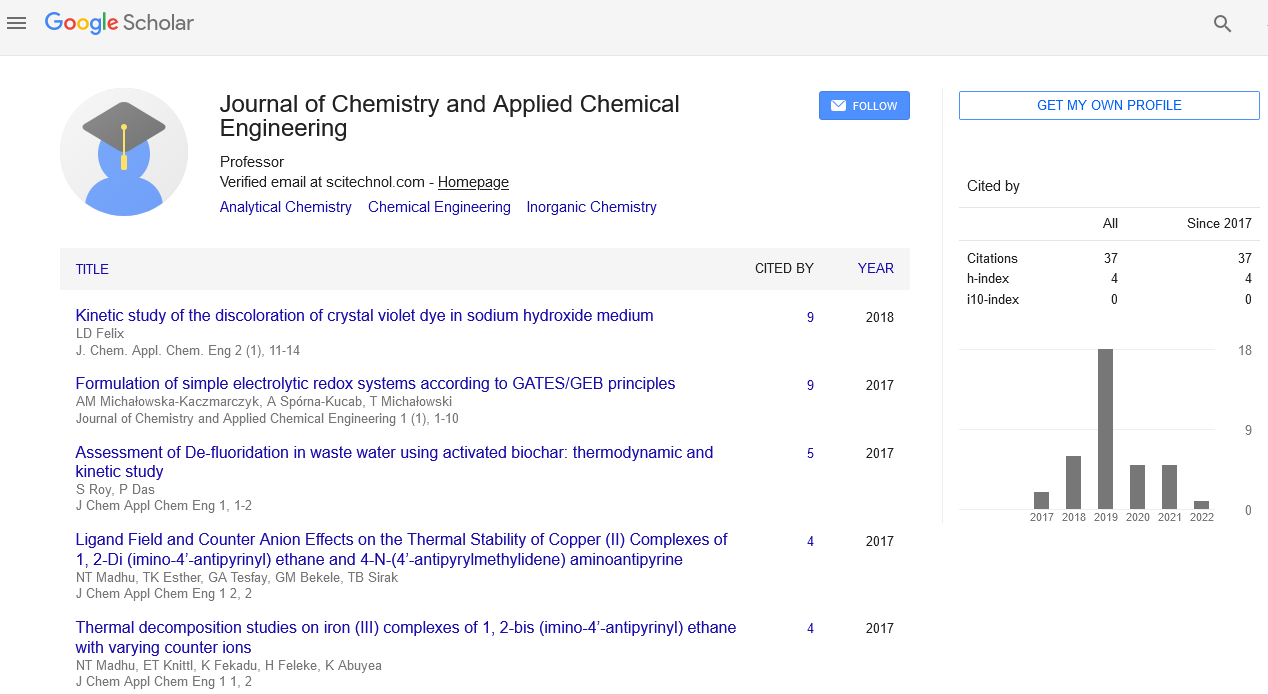Nanoplasmonic and composite photonic structures for bio sensing, environmental and energy applications
Ibrahim Abdulhalim
Ben Gurion University of the Negev, Israel
: J Chem Appl Chem Eng
Abstract
Photonic structures and reading methodologies that improve local field enhancement and the performance of biosensors were developed based on surface plasmon resonance (SPR), guided mode resonance, enhanced spectroscopies and total internal reflection (TIR) were developed: (i) a self-referenced sensor based on enhanced optical transmission through metal nanoslits, (ii) a self-referenced ultra-large tunable penetration depth SPR sensor, (iii) a TIR sensor in which the angular edge is converted into a dip with high figure of merit, (iv) a self-referenced SPR sensor based on thin dielectric grating on top of thin metal film, (v) polarimetric approach that improves the detection limit of SPR in the spectral interrogation mode and (vi) guided mode resonance and guided mode SPR and (vii) SERS/SEF substrates with ultrahigh enhancement of the electromagnetic field. In spectral SPR the dip width is around 50nm and therefore the resolution is limited even though the spectral sensitivity is considered relatively high. Using a special methodology we found that the derivative of the phase difference between the TM and TE waves can give the highest resolution, although practically the more directly measured cosine function of the phase difference is the best to use. Several structures were found to reveal self-referencing, thus enabling a better detection limit. High penetration helps in detecting large bioentities more reliably such as bacteria and cells. Figure of merit is defined as the ratio between the sensitivity to the width of the resonance dip; hence its enhancement also improves the detection limit. Combining all this in one system together with compact reading methodology and unique signal processing allows refractive index sensing limits down to 10-8. Metallic nano-sculptured thin films (nSTFs) prepared by the glancing angle deposition were found by us recently to exhibit optimum SPR sensitivity, SERS and SEF signals at around 30% porosity and used for the detection of large bioentities. In addition new configuration that combines coupling between extended SPR with localized SPR was found recently to give ultrahigh field enhancement thus improving the detection limits and simplifying the setups of SERS and SEF biosensors.
Biography
Ibrahim Abdulhalim is a Professor at the Electro-optical Engineering Unit at Ben-Gurion University of the Negev. He worked in academic institutions and companies such as the OCSC in University of Colorado Boulder, the ORC at Southampton University, and the Thin Films Center of the University of Western Scotland, in KLA-Tencor, Nova and GWS Photonics. He has published over 200 articles, two books, 10 chapters and has 20 patents. He is a fellow of IoP and SPIE and an Associate Editor for the Journal of Nano Photonics and for the Journal of Imaging.
E-mail: abdulhlm@bgu.ac.il
 Spanish
Spanish  Chinese
Chinese  Russian
Russian  German
German  French
French  Japanese
Japanese  Portuguese
Portuguese  Hindi
Hindi 